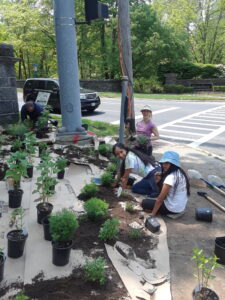
Pollinator pathways are a growing trend. With bird and insect populations under stress, activists up and down the Hudson River are planting native species and spurning the use of pesticides and herbicides.
Clusters of native plants that attract buzzing bees and singing birds are popping up in parks, on Main Streets, in strips of dirt along roadways, around schools and libraries and on private property. Bees have limited flying distance so the goal is to make it easier for them to thrive by patching together favorable habitats.
“Pathways counter the prevailing lawn culture, but it’s a way to address the sense of climate despair,” said Eva Thaddeus, who lives in Croton-on-Hudson and owns Wild Gardens Nursery in Cortlandt. “This is something you can do literally in your backyard that really makes a difference. The insects come right away, sometimes ones I’ve never seen before.”
Working with the Croton Garden Club, she helped create native gardens at the middle and high schools along with another planting in the median strip of Cleveland Drive. The club plans to plant another pathway at Dobbs Park with help from the village.
Her nursery, which specializes in native plants and is open seasonally, is seeing increased interest. “We had a line of cars outside right when we opened and people had their lists in hand,” she said.
Pollinator gardens adorn the Peekskill and Croton waterfronts and Cortlandt created one at Lake Meahagh Town Park.
In Tarrytown, native plants grow in Patriots Park, Neperhan Park, Sarah
Michaels Park near Village Hall, Main Street, Warner Library, Laura Ray Insurance, outside CVS, the perimeter of the Jewish Community Center and near the entrance to the Gracemere development.
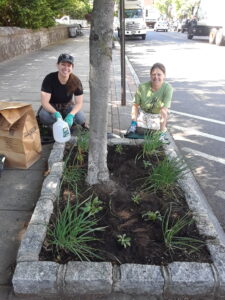
Placing pollinator plantings around the Metro-North station took two years to negotiate, said Mai Mai Margules, who chairs the landscaping committee of the Tarrytown Environmental Advisory Committee. Signage, often bilingual, helps educate the public and the committee provides free consultations and resources.
“Pollinators are in trouble and anyone can help by changing the way they maintain their gardens and yards,” said Margules. “The public plantings let people know what’s going on and shows them that native plants can in fact be beautiful.”
Establishing gardens is the easy part, said Margules. More difficult is taking care of the plants once they are placed in the ground, so a platoon of volunteers helps keep things tidy. The village helps out, working with the Warner Library to raise $5,000, adding a budget for plantings and chipping in with personnel from the Parks Department and the Department of Public Works.
Pollinator pathway movements in Ossining, Ardsley and Pleasantville also illustrate that change is in the air, she said: “Landscapers are adjusting and I’m seeing native plants showing up in Hamptons magazine, Architectural Digest and The New York Times.”
The grassroots pollinator movement started in Wilton, Connecticut, and took on a life of its own, said Donna Merrill, one of the founders of www.pollinator-pathway.org. They’ve been spreading the word, which was heard five years ago by Chet Kerr, chairman of the Irvington Land Trust.
“We planted demonstration gardens and started a speaker series at a time when there was only one other community in Westchester doing this,” said Kerr. “Now it has really taken off.”
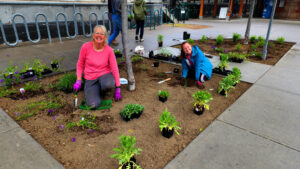
In Irvington, native plants sprout on the Old Croton Aqueduct and a strip of land along a parking lot near the library. Volunteers are clearing invasive species from Irvington Woods and the high school environmental club planted a native garden on school grounds.
The O’Hara Nature Center on Mountain Road “does amazing things,” said Kerr, and the village recently hired a sustainability coordinator who is involved with the pollinator pathways.
Private citizens also pitch in. Kerr knows a couple who decided to plant a native garden in a circle of land within their cul-de-sac. Even one planter or backyard garden makes a difference, he said.
“This issue is getting communities engaged and focused on open space,” he said. “People understand it and they realize it’s empowering to know that something so simple, which can be done in your own yard, makes a broader connection and impact.”
All photos provided by Tarrytown Environmental Advisory Council


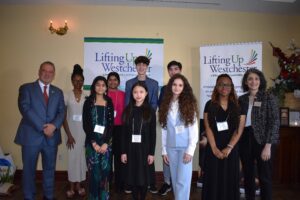
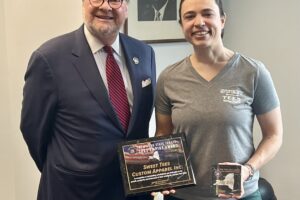



The First Pollinator Pathway
Seattle artist, Sarah Bergmann, founded the original Pollinator Pathway which is an interdisciplinary ecological philosophy for healthy global design that connects parks to parks and combats urban sprawl. Wilton may have initiated it on the East Coast, but the original concept was not theirs.